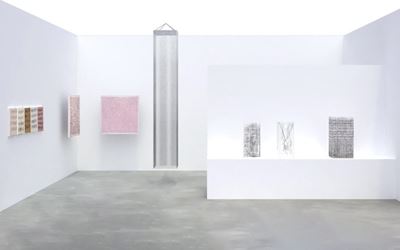León Ferrari (1920–2013) lived in exile in São Paulo from 1976 to 1991. During this period the artist was able to renovate his production, conceiving new formal typologies previously unseen in his work while systematising his radical, sarcastic, critique of Power and Religion.
1976 was the infamous year when a military coup imposed a long period of dictatorship in Argentina. Sensing danger for him and his family, Ferrari decided to settle in São Paulo. The initial years were tainted by fear and anxiety related to the whereabouts of his son Ariel, a political activist who, alongside his pregnant wife, had been abducted, illegally imprisoned and murdered by the military forces in Argentina. León and Alicia Ferrari would never have the possibility to bury the remains of their sons. A long struggle for justice began, as Ferrari ceaselessly reached out to numerous international organisations and institutions claiming justice for his son. Strikingly, it was at this crucial moment in life that Ferrari revisited his abstract drawing practice, which he had masterfully dominated in the early 1960s.
Repeating a signature shape resembling tongues-of-fire, using a completely new gestural tracing, he then conceived a new typology of abstraction. Strikingly, these drawings, testimony one of the most dramatic experiences in the life of the artist, appearing like abstract metaphors of Judeo Christian hell by someone who, later-on in life, would address a letter to the Pope demanding the cancellation of the notion of Hell.
In São Paulo Ferrari also reached a peak in his sculptural practice using tangled metal wire to produce prismatic-like sculptures resembling cages, or modular, jail-like volumes, some of them monumental in scale and designed as elements for participatory, performative and sound-based events.
The exposure to the overwhelming city contributed to a new set of works labeled as 'architecture of madness', manifest in unprecedented drawings, prints and unfolding into various reproductive techniques such as Xeroxes, blueprints, cyanotypes, etc.in which he stressed the absurdity of ordinary life, the alienation of multitudes. His long-lasting interest in language is also present in drawings and collages where Bestiaries, Alphabets, numeric series, and tangled lines echo his sculptures and collide in various hermetic, erotic, ironic sets of codification.
Ferrari's most compelling legacy within his Brazilian production relates to his re-reading of the Bible and the denunciation of political horrors and institutional violence. In appropriating images of war, history and art history Ferrari entirely re-invented collage for the purposes of his deconstruction of Power—such as Michelangelo's Final Judgment that was submitted to the defecation of birds in a major mature performative work—as well as conflating Christian imagery with Oriental erotic images.
Galeria Nara Roesler is proud to celebrate Leon Ferrari's centennial anniversary with this virtual show featuring his landmark Brazilian production.
Press release courtesy Galeria Nara Roesler.
Avenida Europa 655
JD Europa
São Paulo, 01449-001
Brazil
www.nararoesler.art
+55 112 039 5454
Mon - Fri, 10am - 6pm
Sat, 11am - 3pm
Book your visit via the link or by emailing [email protected]
